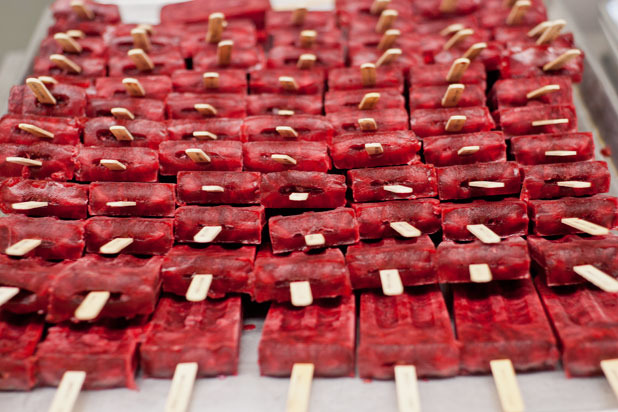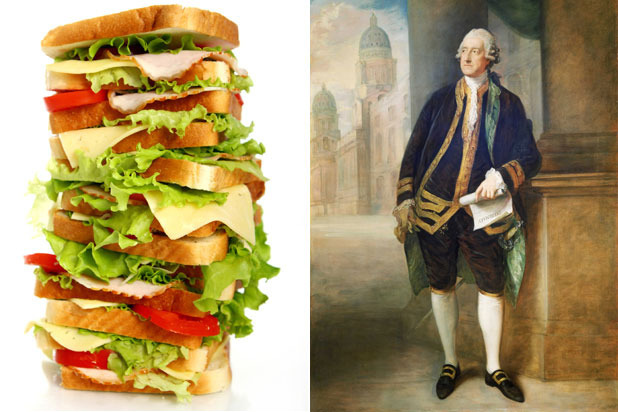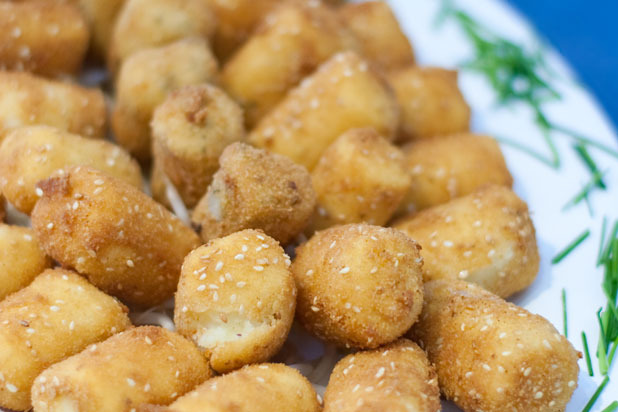Who Invented Your Favorite Foods? (Slideshow)
In the mid-1920s, an Austrian by the name of Eduard Haas invented a small, brick-shaped peppermint candy which he called Pez, short for pfefferminze, or 'peppermint' in German. It was a hit among his friends, and as an anti-smoking advocate, he thought it could be a good cigarette alternative. So in 1947 he developed a Pez dispenser that resembled a cigarette lighter and dispensed them one at a time. Sales weren't great because they were marketed to adults, but once he decided to sell them to children in 1955, along with putting cartoon heads on top of the dispensers and introducing fruit flavors, it took off, and remains a cultural touchstone to this day. Bet you didn't know the inspiration for the Pez dispenser was a cigarette lighter!
Nachos
Like all the greatest inventions, Nachos were born out of necessity. The military base at Eagle Pass, Tex. Is located right across the Rio Grande from Piedras Negras, Mexico, and during an excursion across the border by military wives they stopped into a restaurant called the Victory Club. Maitre d' Ignacio Anaya couldn't locate his chef, however, so he quickly whipped up a canapé from what he could find lying around: tortilla chips, cheese, and jalapeno peppers. He named the dish after his nickname, Nacho, and the rest is history.
Hamburgers
The Hamburg steak, a patty of ground beef cooked on a flat top, has been around for ages (and originated, as the name might suggest, in Hamburg, Germany), but the first person to put the patty between two pieces of bread is still up for a bit of debate. The most widely accepted contender, however, was Louis Lassen. He opened a lunch wagon in New Haven in 1895 and moved into a small building a couple years later. In 1900, as legend has it, in order to satisfy a hurried customer, he placed ground beef into a vertical broiler and served it between two slices of bread, thus giving rise to the hamburger. You can still get the same exact experience as the first customer is you visit Louis Lunch in New Haven today, run by the fourth generation of Lassens.
Potato Chips
If you dig into the history of the potato chip a little, you might discover that they were originally named Saratoga chips. This is thanks to the place of their invention, in Saratoga, New York. Here's the legend: On August 24, 1853, a customer at Cary Moon's Lake Lodge was unhappy with his soggy French fries, so a Native American chef by the name of George Crum sliced potatoes super-thin and fried them in oil to make them as crispy and crunchy as possible. This theory has been debated, however, and Crum never made any claims to having invented it (the invention wasn't mentioned in any stories about him during his life or his obituary, either). The more likely story is that his sister, Katie Speck Wicks, was frying crullers and peeling potatoes at the same time. A potato slice fell in the oil, and voila! Chips remained a local specialty until the Depression, when an entrepreneur named Herman Lay brought them to the masses.
Chocolate Chip Cookies
Chocolate chip cookies seem like they've been around forever, but they were actually invented in 1930, by Ruth Wakefield, who ran an inn in Whitman, Mass. Called the Toll House Inn. In that year she not only created the first recipe for the classic Toll House cookies, she also invented the chocolate chip. As the story goes, she was making chocolate cookies when she ran out of baking chocolate. So she 'chipped' a block of semi-sweet chocolate into little pieces and added them into the batter, but when the cookies came out of the oven they hadn't melted into the cookie. She took a bite, and arguably the best cookie of all-time had been invented, by accident.
Popsicles
Like most great culinary inventions, popsicles were created by accident. In 1905, 11 year-old Frank Epperson left powdered soda, water, and a stirring stick on his porch overnight. In the morning it had frozen solid, and tasted pretty good. He called his creation the Epsicle, and in 1923, while running a lemonade stand in Oakland, Calif., he had the idea to turn it into a business. He changed the name to Popsicle, patented it, and by 1928 he had earned royalties on more than 60 million ice pops sold.
Sandwich
People have most likely been putting meat and other stuff in between two slices of bread for ages, but this humble creation didn't earn a name until the mid-1700s, when British statesman John Montagu, the 4th Earl of Sandwich, (as legend has it) was too busy with a game of cards to take a meal, so he had his steward put the meat in between two slices of bread so he could hold it with one hand.
Tater Tots
You might have noticed that Tater Tots are a proper noun, like Band-Aid and Popsicle, meaning that you can't just create your own and call it a Tater-Tot (not legally, anyway). Tater-Tots are actually a registered trademark of the Ore-Ida Company, and were invented in 1953 by the company's founders, Golden and F. Nephi Grigg (great names). They were left with lots of awkwardly-shaped potato slices after potatoes were cut up, and had to think or something to do with them. So they grated them, added flour and seasonings, and pushed them through an extruder into hot oil, and the resulting product was nothing short of magical. They hit the shelves 3 years later, and have been a top seller ever since.
Ice Cream Cones
As the story goes, at the 1904 World's Fair in St. Louis an ice cream vendor ran out of serving dishes. So he walked over to Ernest Hamwi, who was selling crispy Syrian pastries named zalabis next door, and together the two devised a way to roll the waffle-like pastry into a cone so ice cream could be placed inside. It was a success, and soon after Hamwi started a company exclusively dedicated to producing and selling waffle cones.
Twinkies
The most infamous of snack cakes was invented by a baker named James Dewar in 1931. An employee of the Continental Baking Company, which later became Hostess, his plant made strawberry shortcakes but needed to figure out something to make during the off-season. His idea to make a shortcake with cream on the inside instead of strawberries took off, and he named his idea Twinkies after a billboard he saw for the Twinkle Toe Shoe Company. Dewar rose to be a regional vice president at Hostess, a position he held until retiring in 1972.









